
We heard yuzu kosho can spice up our desserts, so we put it to the test.
At first glance, you might mistake yuzu kosho for wasabi, seeing as how it’s a spicy green paste that usually comes out of a tube. But while wasabi is a grated root, yuzu kosho is a mixture made with zests of yuzu, a sharp citrus fruit, and green chili peppers.
Yuzu kosho can be a wasabi substitute when eating sashimi, and it’s especially popular as a seasoning for nabe, Japanese-style hot pot. The latter is how our Japanese-language reporter Yuko Sawano primarily uses it, but with nabe being a dish that’s most delicious in cold weather, come the later half of spring Yuko’s yuzu kosho tube tends to sit idle in her refrigerator…until now.
Recently there’s been talk from Japanese foodie personality Ao that yuzu kosho is secretly a great thing to add a dollop of to your desserts. Sensing an opportunity to broaden her knowledge and an excuse to eat a triple portion of desserts, Yuko dashed to the store to pick up a trio of treats tempting enough on their own, then grabbed her yuzu kosho tube and got to experimenting.
First up: vanilla ice cream. Since the flavor has proven itself as the perfect ice cream canvas to enhance with toppings and mix-ins, Yuko was cautiously optimistic (it worked out OK enough for soy sauce, after all).
That optimism was quickly rewarded. Yuzu kosho itself is a mix of tart, spicy, and salty notes, and together they gave the vanilla ice cream a refreshingly crisp finish to its flavor profile, with just a hint of spice lingering on the tip of her tongue. Just make sure to stir the yuzu kosho into the cream instead of leaving it in a clump on top, so that its influence is evenly distributed throughout and not concentrated in an overly intense moment.
Next on the list: cheesecake.
Since cheesecake alone already has tart taste elements, Yuko was a little worried that adding yuzo kosho’s citrus aspect would turn it into a harshly sour mess. Thankfully, that didn’t happen, and the rich creaminess of the cheesecake keeps the spiciness of the yuzu kosho from running wild in your mouth, creating a surprisingly harmonious and refreshing sensation.
And last, mitarashi dango.
This is the one we had the highest hopes for. It’s pairing a Japanese dessert with a Japanese condiment, and while mitarashi dango are sweet, their soy sauce glaze isn’t as saccharine as what you’ll usually find in Western-style desserts, and the mochi dumplings being lightly charred gives them a bit of a savory feeling too.
And sure enough, Yuko didn’t feel even a hint of discordancy here. They were delicious, with the resulting sweet-and-spicy flavor making them feel a bit closer to an all-purpose snack as opposed to strictly a sweet-tooth appeasing dessert. As an added bonus, since mitarashi dango are sold with multiple dumplings to a stick, you can choose to put the yuzu kosho on some dumplings and leave it completely off others, so that you can vary the flavors mid-way through your snack session.
As weird as the idea had initially sounded, adding spicy citrus to her desserts turned out to be a sweet idea in Yuko’s opinion, and she judges these enhanced indulgences three for three in the deliciousness department. So rather than her yuzu kosho stock sitting unused for the summer, now it looks like she’s going to have to go out and buy another tube ASAP.
Reference: Yuzu Kosho Researcher Ao
Photos © SoraNews24
● Want to hear about SoraNews24’s latest articles as soon as they’re published? Follow us on Facebook and Twitter!
[ Read in Japanese ]

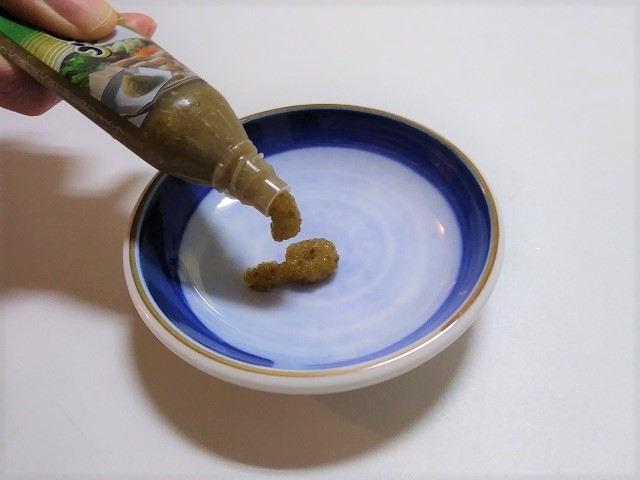
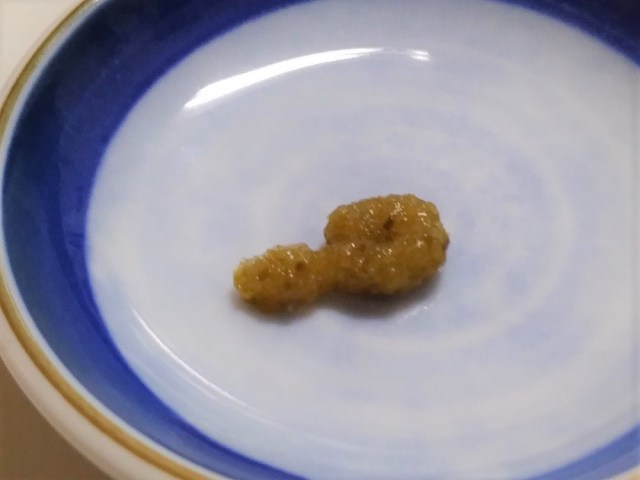
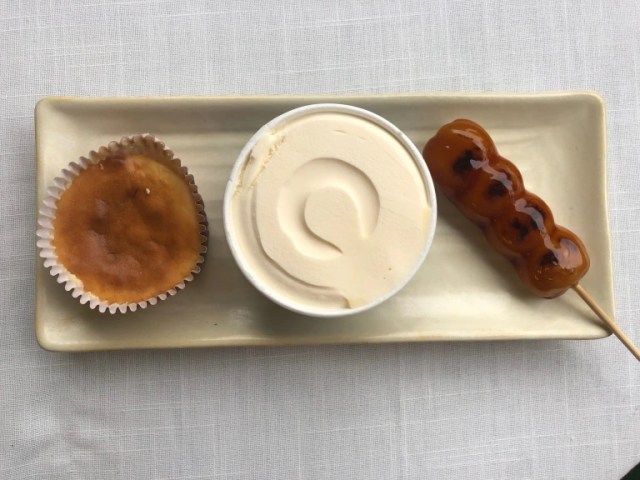
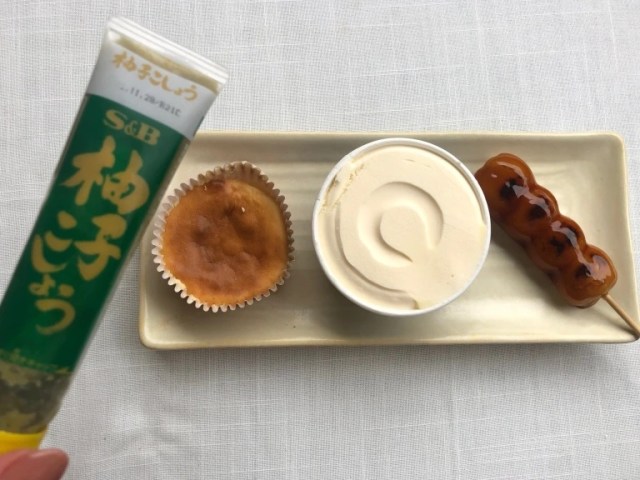
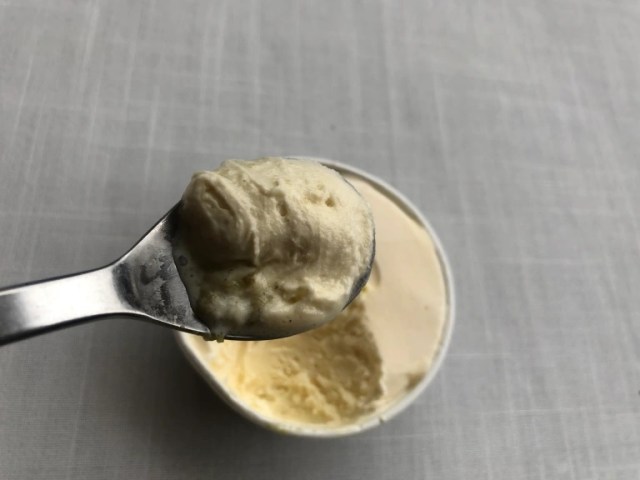
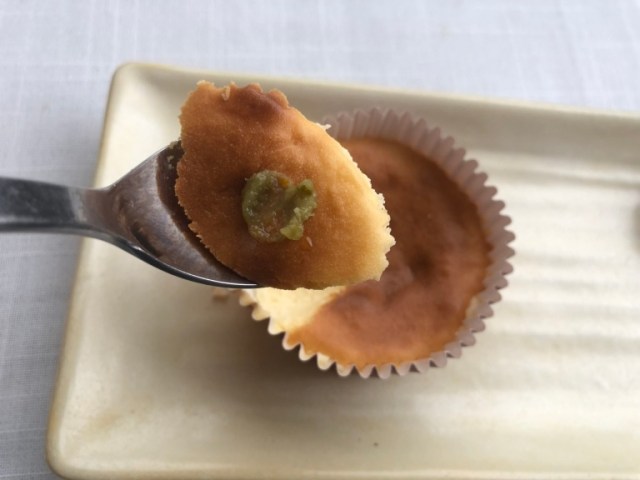
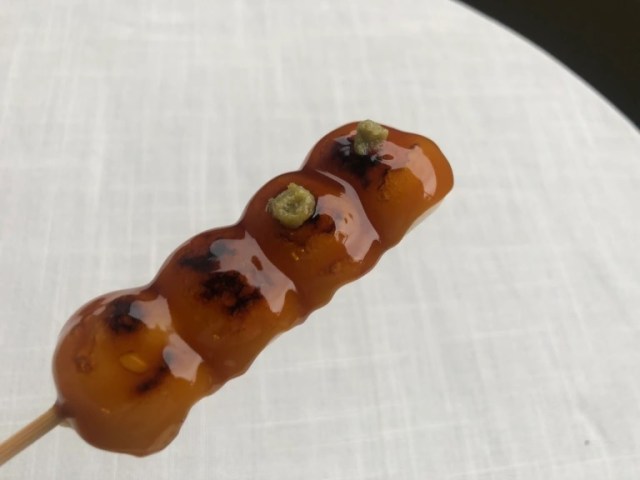
 Japan has eggs that smell and taste like yuzu citrus fruit, and they’re amazing!
Japan has eggs that smell and taste like yuzu citrus fruit, and they’re amazing! Häagen-Dazs Japan brings out Yuzu Blanc Manger ice cream for a limited time this summer
Häagen-Dazs Japan brings out Yuzu Blanc Manger ice cream for a limited time this summer Dean & DeLuca now has fancy good luck sushi rolls to help Japan celebrate Setsubun【Photos】
Dean & DeLuca now has fancy good luck sushi rolls to help Japan celebrate Setsubun【Photos】 Häagen-Dazs Japan’s Yuzu Green Tea Float — How to make the super-easy matcha summer dessert drink
Häagen-Dazs Japan’s Yuzu Green Tea Float — How to make the super-easy matcha summer dessert drink Don’t drink alone! Nine Japanese snacks to accompany sake that you’ve probably never tried
Don’t drink alone! Nine Japanese snacks to accompany sake that you’ve probably never tried Japan’s new difficult-to-drink-from beer glass protects your liver, but it’s a brutal experience
Japan’s new difficult-to-drink-from beer glass protects your liver, but it’s a brutal experience Demon Slayer: Kimetsu no Yaiba gets new roller coaster attractions and food at Universal Studios Japan
Demon Slayer: Kimetsu no Yaiba gets new roller coaster attractions and food at Universal Studios Japan New samurai glasses are Japan’s latest weird must-have souvenir
New samurai glasses are Japan’s latest weird must-have souvenir Come play hide-and-seek on a deserted Japanese island this August and November
Come play hide-and-seek on a deserted Japanese island this August and November How to order snacks on a Shinkansen bullet train in Japan
How to order snacks on a Shinkansen bullet train in Japan Doraemon found buried at sea as scene from 1993 anime becomes real life【Photos】
Doraemon found buried at sea as scene from 1993 anime becomes real life【Photos】 Caffeinated ramen for gamers that you can eat with one hand going on sale in Japan
Caffeinated ramen for gamers that you can eat with one hand going on sale in Japan Burger King Japan suddenly adds Dr. Pepper and Dr. Pepper floats to its menu nationwide
Burger King Japan suddenly adds Dr. Pepper and Dr. Pepper floats to its menu nationwide Princesses, fruits, and blacksmiths: Study reveals the 30 most unusual family names in Japan
Princesses, fruits, and blacksmiths: Study reveals the 30 most unusual family names in Japan New Nintendo Lego kit is a beautiful piece of moving pixel art of Mario and Yoshi【Photos】
New Nintendo Lego kit is a beautiful piece of moving pixel art of Mario and Yoshi【Photos】 Nintendo history you can feel – Super NES, N64, and GameCube controllers become capsule toys
Nintendo history you can feel – Super NES, N64, and GameCube controllers become capsule toys Hello, cosmetics! Clinique teams up with Hello Kitty this summer for first-time collaboration
Hello, cosmetics! Clinique teams up with Hello Kitty this summer for first-time collaboration “The most Delicious Cup Noodle in history” – Japan’s French Cup Noodle wins our heart【Taste test】
“The most Delicious Cup Noodle in history” – Japan’s French Cup Noodle wins our heart【Taste test】 Starbucks releases a cute Frappuccino and Unicorn Cake…but not in Japan
Starbucks releases a cute Frappuccino and Unicorn Cake…but not in Japan Kyoto Tower mascot termination reveals dark side behind cute Japanese characters
Kyoto Tower mascot termination reveals dark side behind cute Japanese characters McDonald’s Japan’s Soft Twist Tower: A phantom ice cream only sold at select branches
McDonald’s Japan’s Soft Twist Tower: A phantom ice cream only sold at select branches Yabai Ramen: What makes this Japanese ramen so dangerous?
Yabai Ramen: What makes this Japanese ramen so dangerous? Finally! Nintendo Japan expands Switch 8-bit controller sales to everybody, Online member or not
Finally! Nintendo Japan expands Switch 8-bit controller sales to everybody, Online member or not Japanese government wants to build luxury resorts in all national parks for foreign tourists
Japanese government wants to build luxury resorts in all national parks for foreign tourists To combat declining birth rate, Japan to begin offering “Breeding Visas” to foreigners
To combat declining birth rate, Japan to begin offering “Breeding Visas” to foreigners 10 things you should buy at 7-Eleven in Japan
10 things you should buy at 7-Eleven in Japan Studio Ghibli releases anime heroine cosplay dresses that are super comfy to wear
Studio Ghibli releases anime heroine cosplay dresses that are super comfy to wear Woman charged for driving suitcase without a license in Osaka
Woman charged for driving suitcase without a license in Osaka Studio Ghibli unveils My Neighbour Totoro miniature house model
Studio Ghibli unveils My Neighbour Totoro miniature house model Kyoto experiencing problems with foreign tourists not paying for bus fares, but not on purpose
Kyoto experiencing problems with foreign tourists not paying for bus fares, but not on purpose Fighting mild hunger with a Japanese soda that turns into jelly in the stomach【Taste test】
Fighting mild hunger with a Japanese soda that turns into jelly in the stomach【Taste test】 Studio Ghibli’s Howl’s Moving Castle tapestry unveiled in Japan for first time
Studio Ghibli’s Howl’s Moving Castle tapestry unveiled in Japan for first time McDonald’s new Happy Meals offer up cute and practical Sanrio lifestyle goods
McDonald’s new Happy Meals offer up cute and practical Sanrio lifestyle goods Sales of Japan’s most convenient train ticket/shopping payment cards suspended indefinitely
Sales of Japan’s most convenient train ticket/shopping payment cards suspended indefinitely Sold-out Studio Ghibli desktop humidifiers are back so Totoro can help you through the dry season
Sold-out Studio Ghibli desktop humidifiers are back so Totoro can help you through the dry season Japanese government to make first change to romanization spelling rules since the 1950s
Japanese government to make first change to romanization spelling rules since the 1950s Foreigner’s request for help in Tokyo makes us sad for the state of society
Foreigner’s request for help in Tokyo makes us sad for the state of society Ghibli founders Toshio Suzuki and Hayao Miyazaki contribute to Japanese whisky Totoro label design
Ghibli founders Toshio Suzuki and Hayao Miyazaki contribute to Japanese whisky Totoro label design Tokyo’s most famous Starbucks is closed
Tokyo’s most famous Starbucks is closed Menya Musashi’s shaved ice ramen is the perfect dish to beat the Tokyo summer heat【Taste Test】
Menya Musashi’s shaved ice ramen is the perfect dish to beat the Tokyo summer heat【Taste Test】 New Yuzu Sake KitKat combines Japanese rice wine with a zesty local citrus
New Yuzu Sake KitKat combines Japanese rice wine with a zesty local citrus Pepsi’s new Japan Cola has a special ingredient: one of Japan’s most delicious sweets seasonings
Pepsi’s new Japan Cola has a special ingredient: one of Japan’s most delicious sweets seasonings Traditional Japanese cuisine gets an out of this world treatment — we try Japanese Space Food
Traditional Japanese cuisine gets an out of this world treatment — we try Japanese Space Food Häagen-Dazs Japan comes out with sticky-sweet new line of ice cream containing … mochi!
Häagen-Dazs Japan comes out with sticky-sweet new line of ice cream containing … mochi! Vending machine with in-flight meals becomes a sell-out hit at Haneda Airport in Japan
Vending machine with in-flight meals becomes a sell-out hit at Haneda Airport in Japan Oolong tea lattes get a place on the Starbucks Japan menu, but do they get one in our heart too?
Oolong tea lattes get a place on the Starbucks Japan menu, but do they get one in our heart too? Starbucks Japan customisation hack: How to make the new Melon Frappuccino even more delicious
Starbucks Japan customisation hack: How to make the new Melon Frappuccino even more delicious Trying out Starbucks Japan’s ultra relaxing 2021 seasonal summer tea drinks【Taste Test】
Trying out Starbucks Japan’s ultra relaxing 2021 seasonal summer tea drinks【Taste Test】 Krispy Kreme releasing new donuts and drink that blend Japanese flavors and European desserts
Krispy Kreme releasing new donuts and drink that blend Japanese flavors and European desserts Häagen-Dazs’ awesome mochi ice creams with black sugar syrup and sweet miso glaze are coming back
Häagen-Dazs’ awesome mochi ice creams with black sugar syrup and sweet miso glaze are coming back This ramen restaurant has no name, is one of the best hidden finds in Japan
This ramen restaurant has no name, is one of the best hidden finds in Japan Mouth-watering customized Japanese cooking sauces offered by mail-order company
Mouth-watering customized Japanese cooking sauces offered by mail-order company McDonald’s Japan’s new McFlurry comes in a unique hyuganatsu citrus cheesecake flavour
McDonald’s Japan’s new McFlurry comes in a unique hyuganatsu citrus cheesecake flavour Krispy Kreme’s new line of doughnuts offers plenty of Japanese tea goodness
Krispy Kreme’s new line of doughnuts offers plenty of Japanese tea goodness Smell like matcha tiramisu with new spray lotion from 126-year-old Japanese cosmetics company
Smell like matcha tiramisu with new spray lotion from 126-year-old Japanese cosmetics company
Leave a Reply